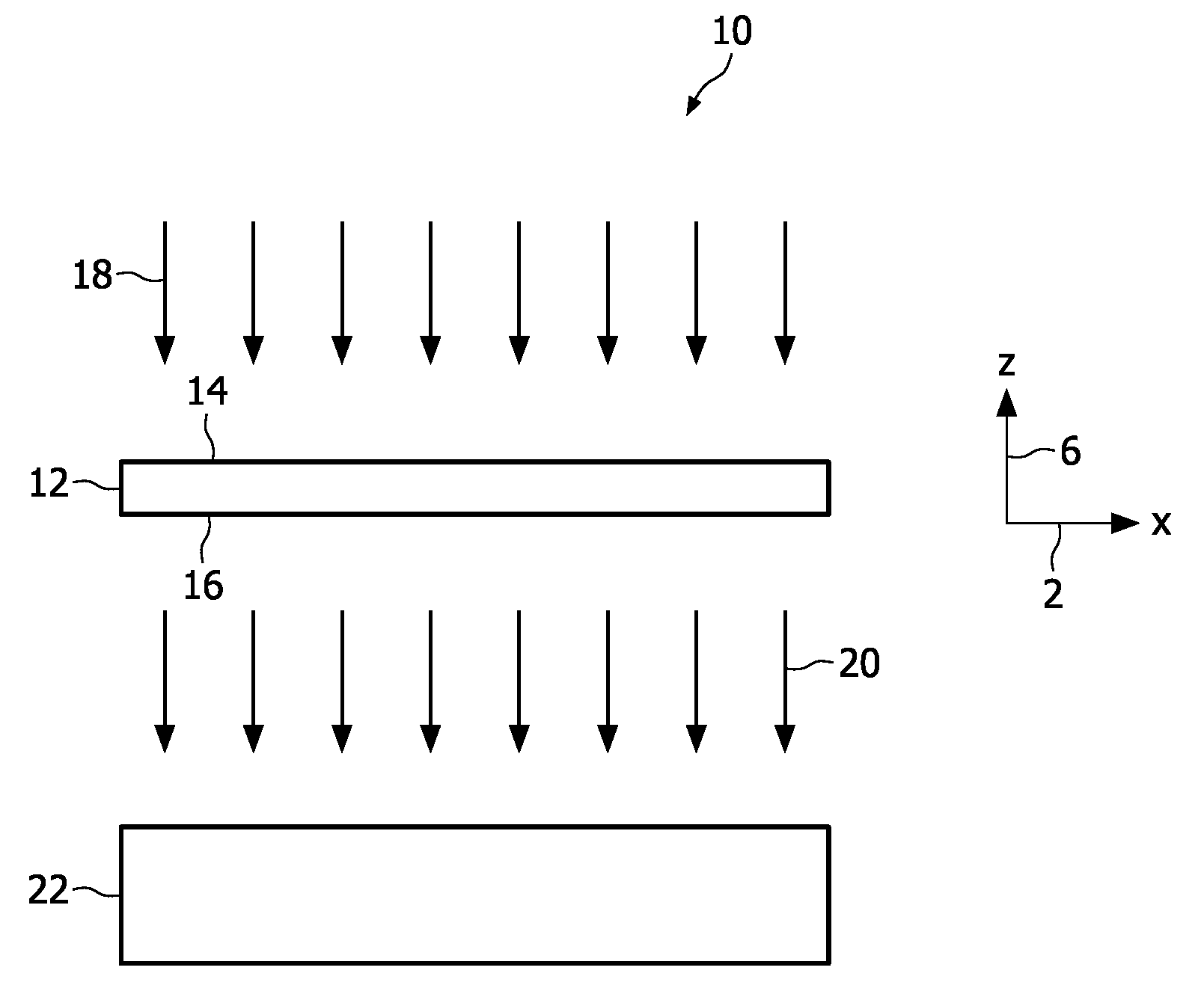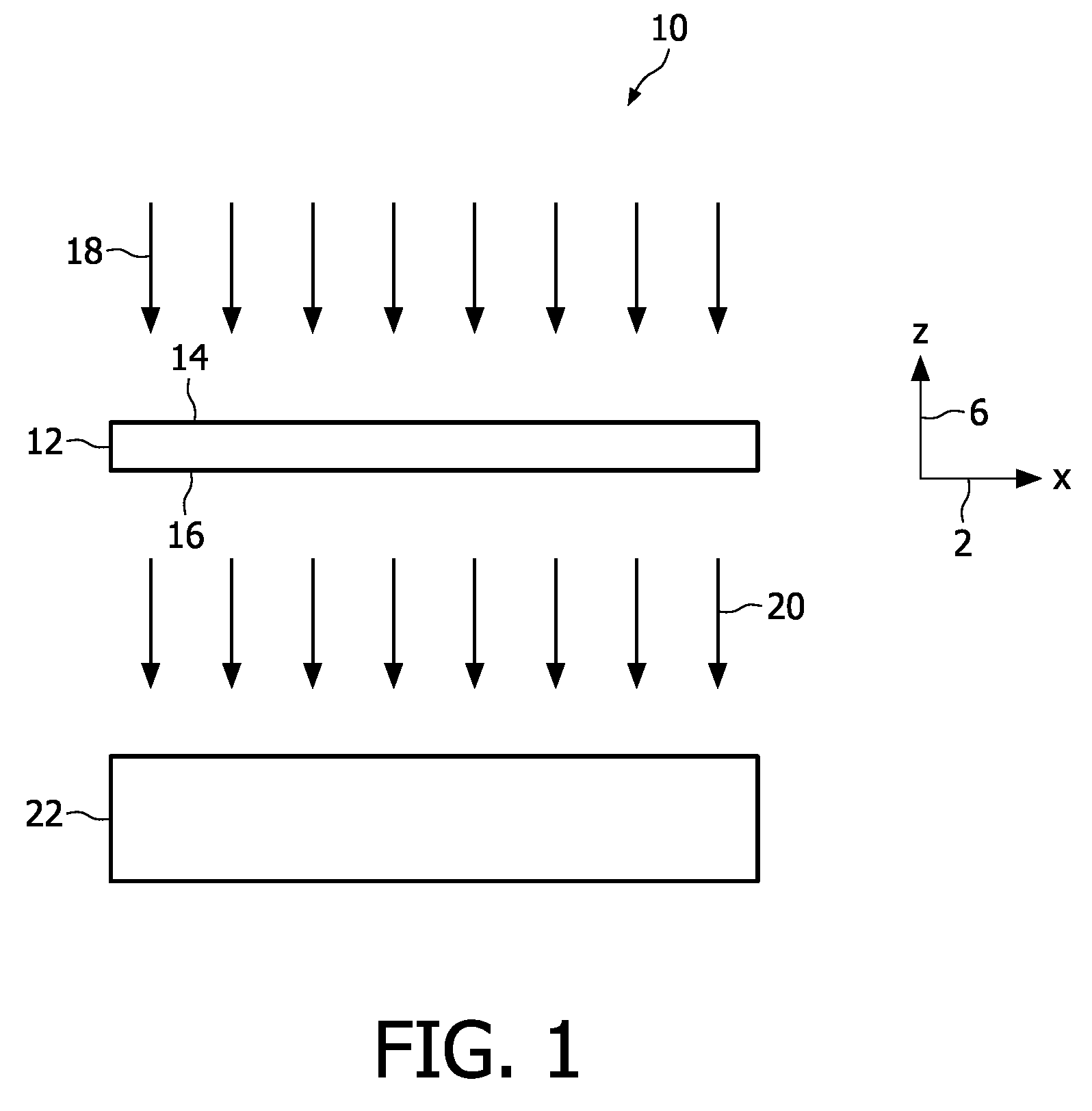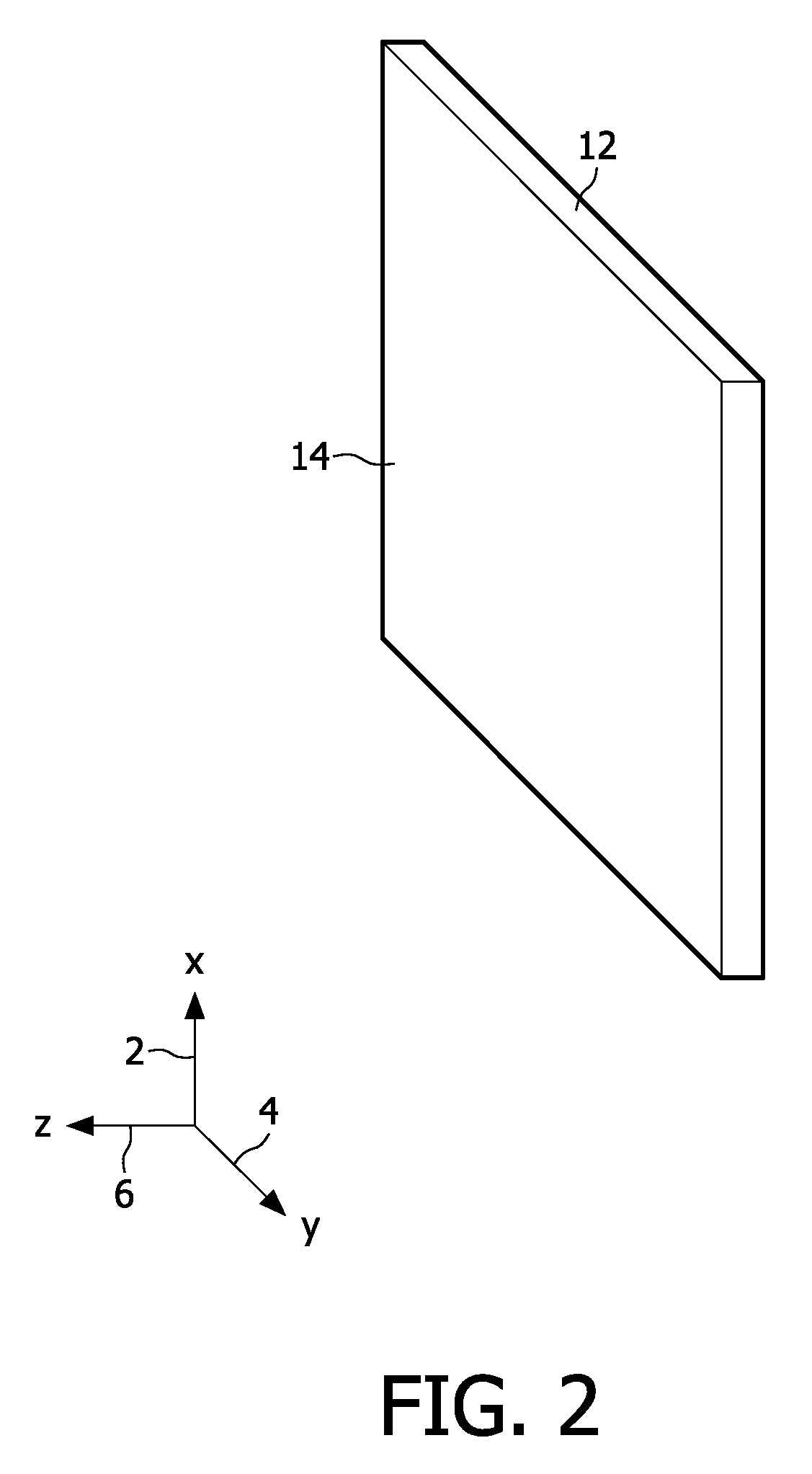Generation of a multicolour image of an unstained biological specimen
a multicolour image and unstained technology, applied in image enhancement, instruments, television systems, etc., can solve the problems of digital pathology world's prejudice against imaging techniques that create black-and-white (b&w) or greyscale, and achieve the effect of improving the resemblence of multicolor image to a conventional staining-based imag
- Summary
- Abstract
- Description
- Claims
- Application Information
AI Technical Summary
Benefits of technology
Problems solved by technology
Method used
Image
Examples
Embodiment Construction
[0048]Unless specified otherwise, identical or similar reference numerals appearing in different Figures label identical or similar components.
[0049]FIG. 1 illustrates schematically a system 10 for generating a two-dimensional multicolour image of a specimen 12 while FIG. 2 provides a perspective view of the specimen 12. The specimen 12 may, for example, be a liquid layer containing organic material such as individual cells, or a slice of paraffin in which biological material has been embedded. The specimen 12 extends principally along an x-y-plane perpendicular to the plane of the Figure. The specimen 12 comprises at least a first substance (e.g. protein) and a second substance (e.g. nucleic acid). Ultraviolet light 18 of a first frequency is shone onto an upper surface 14 of the specimen 12. Transmitted ultraviolet light 20 of the same frequency leaves the specimen 12 via a lower surface 16 and reaches a detector 22. The detector 22 is coupled to a computer (not shown), for exampl...
PUM
 Login to view more
Login to view more Abstract
Description
Claims
Application Information
 Login to view more
Login to view more - R&D Engineer
- R&D Manager
- IP Professional
- Industry Leading Data Capabilities
- Powerful AI technology
- Patent DNA Extraction
Browse by: Latest US Patents, China's latest patents, Technical Efficacy Thesaurus, Application Domain, Technology Topic.
© 2024 PatSnap. All rights reserved.Legal|Privacy policy|Modern Slavery Act Transparency Statement|Sitemap



